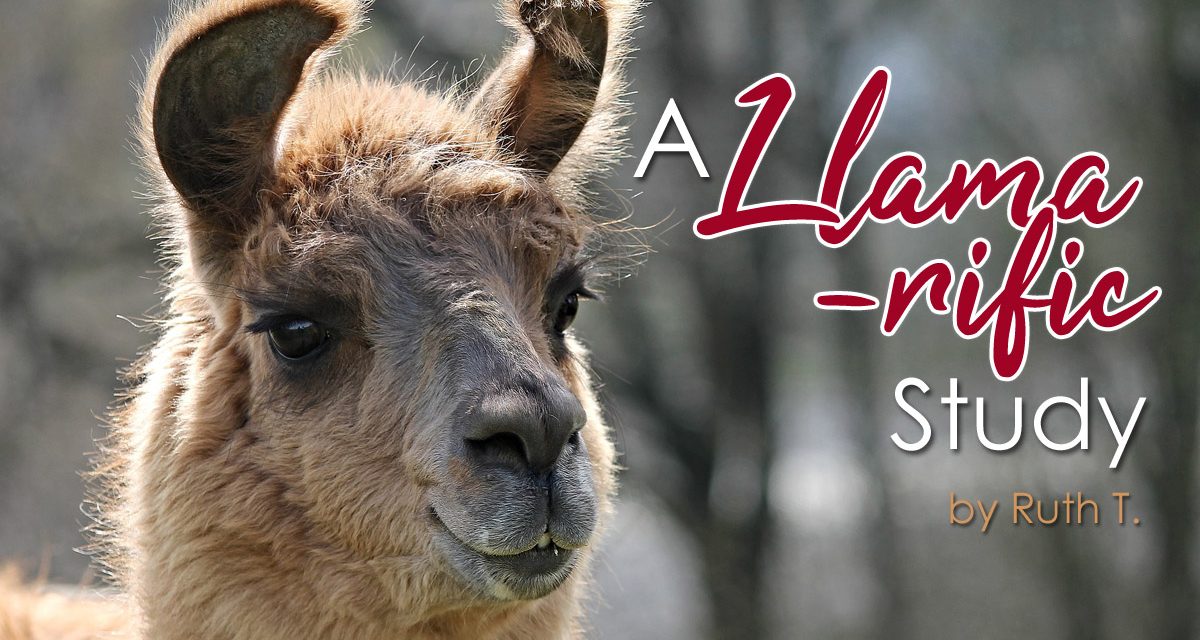I’m seeing llamas everywhere. Have you been seeing them too? They are on sweaters, t-shirts, and coffee mugs. There are stuffed animals, toys, and even llama emojis and GIFs. What is all the llama fuss (or should I say fuzz?) about? Let’s take a fun sidestep this month and study all things llama-mazing!
Llamas in History
Llamas are native to South America. They are part of the camelid family. Have your children guess one other animal in this same animal family (hint: look closely at the family name). Extra points if they can guess a second animal in this category! Camelids are distinctive—besides being pretty adorable. What similar characteristics do you see among the animals in this category?
The US started importing llamas from South America in the 1800s, but in the 1930s, an outbreak of foot and mouth disease (or hoof and mouth disease) occurred. This disease is extremely contagious to any cloven foot animal. Have your kids use their research tools to find out what a cloven hoof is. Have older kids find out where the Bible talks about cloven hooves and why. For a very short time in the 1980s, llama imports were again allowed until another outbreak occurred. Then for a while, llamas become the fad animal to raise in the US. Ironically, just as llamas are currently trending on posters and coffee mugs, the number of US llamas drastically decreased, from 144,782 in 2002 to 39,599 in 2017. Have your kids figure out the percentage of decrease. Students can also create their own pictograph of this information.
Llamas for Multipurposes
So why would you own a llama?
Llamas are herd animals. While some own llamas for pets, others use them as guard animals. Livestock such as sheep, goats, and horses can be vulnerable to predators like coyotes. However, after a time of adjustment, llamas can live among other herd animals and have been used as guard animals. Llamas can weigh from 125 (at 1 year old) to over 400 pounds and grow to around 6 feet tall. They are formidable to predators and are known for spitting as a protection. They make alarm noises and even chase predators. Being fairly hardy animals with good eyesight, Llamas can do their job of protecting while still being comparatively easy to manage and feed.
For centuries, llamas have been used as pack animals, particularly in mountainous areas. Today, many US national parks allow pack llamas to carry or even to provide services like carrying waste or supplies from remote areas. Llamas are used to help visitors better experience the wild. They can carry 20% to even 1/3 of their body weight. So, what would the maximum carry weight be for a 500- pound llama? Watch a llama team in action, arriving at the Great Smoky National Park 6,000 foot mark for a rest and feeding.
Capable of being fairly good natured and calm, llamas have recently been used as therapy animals. A growing field of therapy, animals like dogs, cats and llamas are used to help someone recover from or cope with health issues. Studies show that interaction with animals has helped lower blood pressure, inhibit the production of stress hormones, be helpful in physical therapy, even providing companionship. Although their size may intimidate, their demeanor and even their soft humming has been used as beneficial for therapy in various situations, including at senior centers.
Llamas & Art
A single llama can produce 2-5 pounds of wool a year. Llama fiber blends well, and is lighter and warmer than sheep wool and has no lanolin. It can be resistant to spinning because it is more rigid and slippery than sheep wool. Llama wool naturally comes in a lot of different colors. Llamas have two kinds of wool. The guard hairs are thicker and very straight. They can be used for sturdy projects like rugs and rope making. The down fibers are softer and can be used for making clothing. Many, however, prefer Alpaca fur because it is softer.
Llamas & Language
The name llama easily invites word play: it’s no prob llama! And if you want to study llamas more, you may to llama-nate your library card. A pun (the fancy term is paronomasia, pronounced perənōˈmāZH(ē)ə) is a humorous statement often playing on a word’s multiple meanings, or in the previous puns, using similar-sounding words aiming for humor. Llama puns like mine are more homophonic–pairing words that sound alike: “You can tune a piano but you can’t tuna fish.” In a recent study, neuroscientists discovered that puns activate the puzzle-solving part of the brain rather than the portion typically associated with humor. The humor—and even humor resulting in groans—happens when the meaning you were expecting suddenly changes. With your family, give pun writing a try using llama or give other fun writing tasks a try at Literaryterms.net.
When it comes down (fiber) to it, there’s no question why a llama is the fun animal of choice. There’s so much more to study about Llamas. Go on your own trek of discovery! But excuse me—I’m off to talk to the animals at my local llama farm.
~ Ruth





